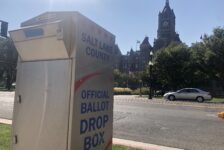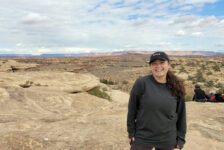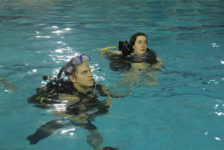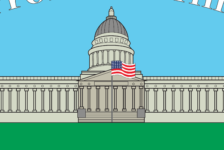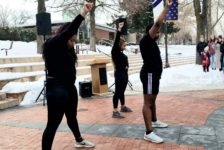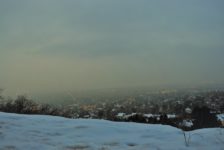
A view from the top of Angel’s Landing looks over Zion National Park in September 2015. Some students at Westminster College are concerned that the increased entrance price for National Park Service (NPS) passes, including at Zion, may make it more difficult for those from lower socioeconomic groups to enjoy the nation’s federal lands. (Photo by Berin Klawiter)
Some students at Westminster College are concerned about the increased entrance price for National Park Service (NPS) passes — which they said may make it more difficult for those from lower socioeconomic groups to enjoy the nation’s federal lands.
The entrance fees at certain national parks, including four of the five parks in Utah, had previously cost $25 or $30 to enter but will now cost $70 in an effort to address maintenance backlog, according to the NPS.
Anna Marno, a sophomore public health major who visits the parks several times a year, said she understands the need for the National Park Service to have a sustainable income to help with preservation but wishes there was a better way.
“I think it’s really important to have funds to maintain the parks,” she said. “But at the same time, I think that it’s pretty sad that the increase in price will limit accessibility to a number of potential visitors.”
The entrance fee increases will come to Bryce, Zion, Arches and Canyonlands, which some said will negatively impact Westminster students who frequently visit the parks during the college’s breaks and in their spare time.
Senior environmental studies major Zoe Zeerip also said the money shouldn’t come from visitors’ pockets.
“Raising the price for daily passes counteracts the point of the national parks being accessible for all and really discourages the use of them,” she said.

Arches National Park, located in Southern Utah, is famous for its more than 2,000 natural stone arches, pictured here in October 2016. The entrance fee increases will come to Bryce, Zion, Arches and Canyonlands, which some said will negatively impact Westminster students who frequently visit the parks during the college’s breaks and in their spare time. (Photo by Berin Klawiter)
The parks are a public entity, Zeerip said, and she thinks it’s a shame that those with little income security may not be able to use them. She herself has visited 19 national parks, which she said hold a rich history for the United States.
“Its invaluable to have land that everyone can access and see world wonders,” she said, adding that the price increase will affect the number of parks she’s able to visit.
Some students said they think the increased prices are unreasonable, but said they’ll still pay more to enter.
“I don’t really mind paying for the pass because I think visiting parks are really important,” Marno said.
One solution for students who know they’re going to visit multiple national parks in a year is to buy an annual parks pass, which costs $80 and offers unlimited access to any of the parks in the United States, according to the NPS website.
Theo Davis, a junior neuroscience major who also visits parks frequently to hike, said he will likely buy an annual parks pass in the future instead of spending $70 to enter one.
“I visit parks enough that the extra $10 is worth it,” he said. “Purchasing an annual pass is a way to incentivize myself to get outdoors and explore the beautiful area around us right now.”
But Zeerip said she may opt instead to enjoy the outdoors elsewhere.
“I know I am not willing to spend $15 a day to go hike, let alone $30 when I can go to Bureau of Land Management land and do it for free,” she said.

